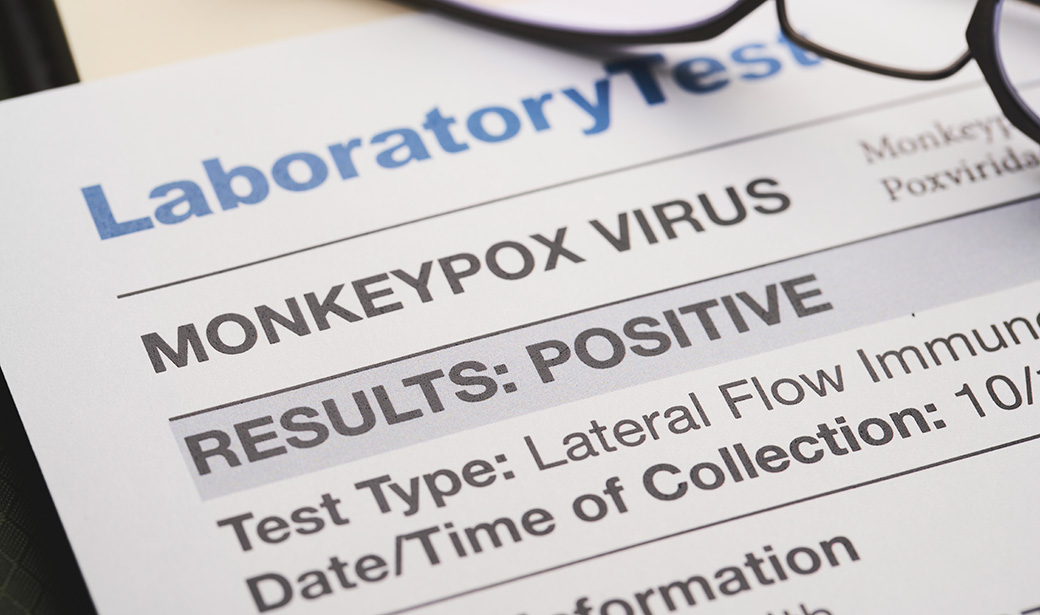If you hadn’t heard much about monkeypox before the summer of 2022, you’re not alone. Except for one minor outbreak in the United States in 2003, monkeypox was rare and mostly occurred in tropical regions of Africa.
Now, the virus is behaving differently, and that has caused a surge in cases worldwide. In August, the U.S. government declared the monkeypox outbreak a public health emergency.
“Before the current outbreak, it spread mainly through animal-to-person contact, usually when people were bitten, scratched or had lots of close contact with an infected animal,” said Taylor Nelson, DO, an infectious disease doctor at University of Missouri Health Care. “During the current outbreak, the primary mode of transmission is direct person-to-person contact.”
Here’s what you need to know about monkeypox.
What is it?
Monkeypox is a viral illness that’s in the same family as smallpox. The illness is rarely fatal, but it causes flu-like symptoms and a painful rash. The illness usually runs its course in two to four weeks, but it can linger longer, particularly in people with weakened immune systems.
Despite the name, monkeys aren’t to blame. The disease was identified in a group of research lab monkeys in 1958, but monkeys — like humans — are just incidental hosts. Monkeypox has traditionally lived and replicated in rodents such as rats, squirrels and prairie dogs.
“The current outbreak presents a little differently than how we’ve historically seen monkeypox,” Nelson said. “In classic cases, you’ll have four or five days of feeling kind of crummy with a fever, then a rash develops, and the rash is mostly on the face and the extremities. But in the current outbreak, the rash is mostly on the genitals or anus. There are a lot of atypical-looking lesions."
In the current outbreak, the disease has mostly affected men who have sex with men. It usually spreads through prolonged skin-to-skin contact, although it also can be transmitted through contact with an infected person’s wound dressings, bedding or towels.
“This is not, to our knowledge, transmitted through vaginal fluid or semen, but it is often transmitted during sex because of the close contact,” Nelson said. “That’s the biggest risk factor: direct contact with an infected person, primarily during sex.”
How can I avoid it?
To minimize the risk of infection, limit your number of sexual partners, avoid kissing or skin-to-skin contact with anyone who has a rash that could be monkeypox and avoid contact with objects or materials used by a person with monkeypox.
There are two smallpox vaccines that can prevent monkeypox, but the supply is limited. The U.S. Centers for Disease Control and Prevention (CDC) recommends vaccination only for people who have been exposed to monkeypox or are likely to be infected.
“In the U.S., we haven’t started doing wide rollouts of pre-exposure vaccines,” Nelson said. “We just don’t have the access to it. In some high-risk areas within high-risk populations, pre-exposure vaccination is available, but otherwise the limited supply of vaccinations is prioritized for post-exposure prevention of infection. We anticipate more vaccine doses will be available as time goes on."
What if I think I have it?
If you think you’ve been exposed to the virus and have symptoms, visit your doctor or go to the emergency room to be evaluated. If necessary, fluid will be removed from two or more lesions and tested for the virus.
If you test positive, isolate at home until the scabs on all your lesions have dried up and dropped off. In the meantime, you can manage the flu-like symptoms and pain with over-the-counter medications such as ibuprofen and acetaminophen. As is the case with the monkeypox vaccines, a limited supply of an antiviral medication is allotted to each state by the federal government based on the prevalence of the disease in that state.
“For most people who are generally healthy, antiviral treatment is not recommended,” Nelson said. “There are antiviral treatments available for a select population, like people who are immunosuppressed and might not fight the infection adequately with their own immune system, but those are not widely available. The idea is to preserve those treatments for the people who really, really need them.”




